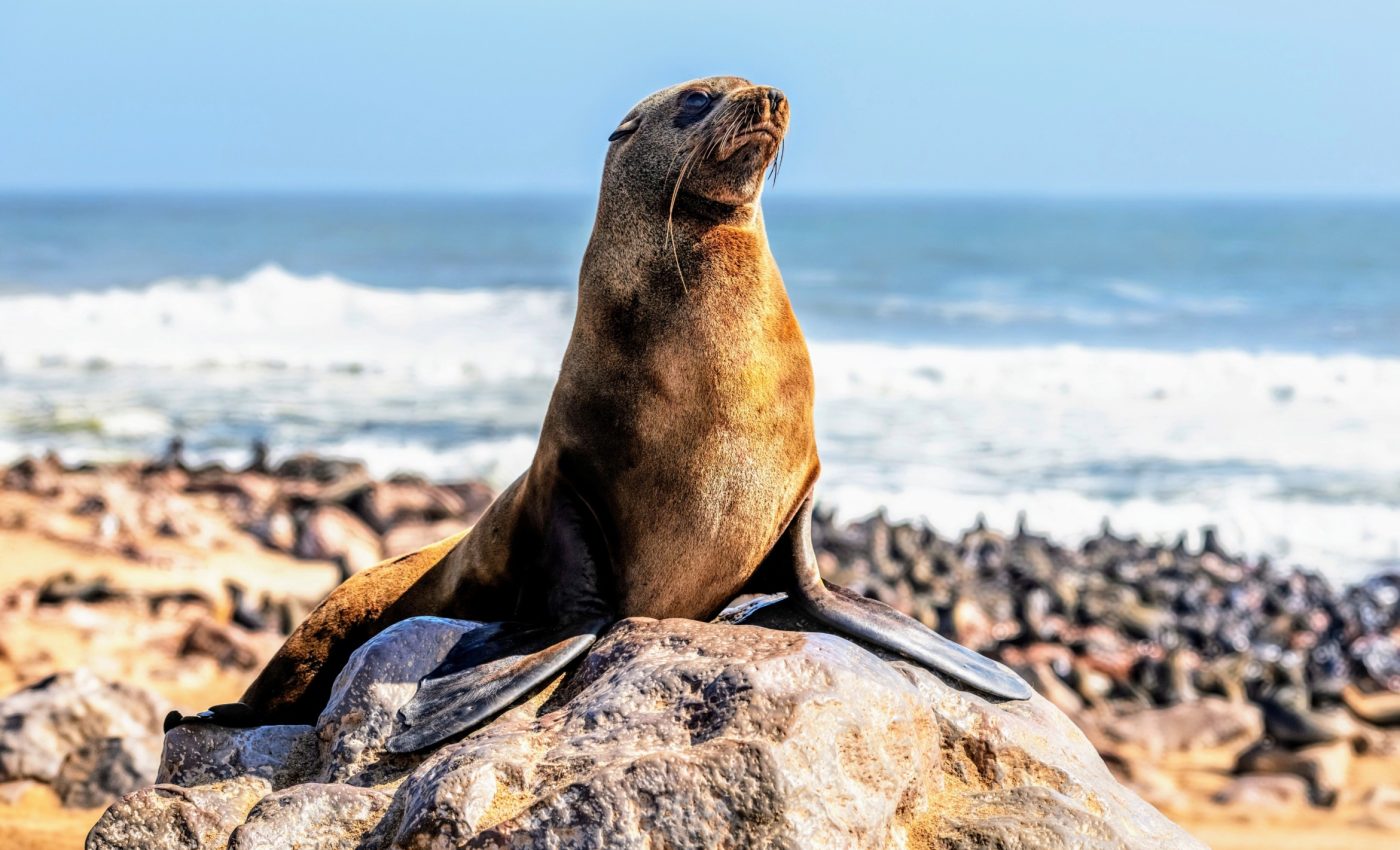
Rabies is spreading among marine animals for the first time
Experts in South Africa have identified an outbreak of rabies in seals. This marks the first time the virus has been found to spread among marine mammals.
Rabies, which affects land mammals and is capable of human transmission, is known for its near 100% fatality rate post symptoms.
Rabies in seals
Rabies typically spreads via saliva, either through bites or simply grooming. The most common hosts have been raccoons, coyotes, foxes, jackals, and domestic dogs. So, it was a shock when this deadly virus was found among Cape fur seals along South Africa’s coast.
In the early 1980s, there was an isolated case where a ringed seal in Norway’s Svalbard islands was found to have rabies.
But, unlike the recent outbreak in South Africa, there was no evidence of the disease spreading further among those seals.
Unusual aggressiveness in seals
Dr. Lesley van Helden, a state veterinarian, revealed that at least 24 Cape fur seals were either found dead or had to be euthanized due to rabies.
However, this discovery wouldn’t have come to light without the help of a dog that got bitten by a seal on a Cape Town beach, leading to the testing of 135 seal carcasses collected since 2021. With 20 more samples collected and tested, more positives emerged.
How was rabies passed to seals?
The experts are still scratching their heads, trying to figure out how the rabies was passed to the seals, and if the disease is spreading among their large colonies.
Greg Hofmeyr, a marine biologist, admits that “it’s all very, very new” and that they are looking at a lot of unknowns. But where does that leave us?
Uncovering the origin of the outbreak
Approximately 2 million seals migrate between South Africa, Namibia, and Angola along Africa’s coast. Van Helden suspects that the seals might have contracted rabies from jackals in Namibia.
Interestingly, the genetic makeup of the rabies virus found in the seals showed a close match with the rabies in black-backed jackals in Namibia.
The virus isn’t just established in the seals – it’s also being transmitted between them through bites. So, the high density of seals, particularly in Cape Town, is alarming.
Controlling rabies in seals
Seals, who happen to be quite the celebrities in Cape Town harbors, have been excessively aggressive over the last three years and responsible for more attacks on people.
Although no human cases of rabies have been recorded, the increase in seal attacks prompted city authorities to start a vaccination program for seals.
While the situation is under careful scrutiny by the U.S. Centers for Disease Control and Prevention, the long-term transmission dynamics can’t be predicted.
Not to mention, the success of the seal vaccination program is based on a presumption about its effectiveness since it has never been tested. There are also logistical questions about how to vaccinate seals along a coast that spans more than 3,500 kilometers.
The path forward
Now that rabies has been discovered in Cape fur seals, a comprehensive approach to monitoring and research is needed.
Experts are advocating for increased surveillance within seal populations and cross-border collaborations with Namibia and Angola to understand the larger geographical impact.
Research efforts are also concentrating on developing diagnostic tools that can rapidly and accurately assess the presence of rabies in marine mammals.
Scientists hope that adaptive management practices will arise from these studies, contributing to a framework that ensures the safety of both seals and humans alike.
Occurrence of rabies in seals
While the occurrence of rabies in seals represents uncharted territory, it is a vivid reminder of the complexities of disease ecology at the intersection of wildlife and human environments.
The movement of rabies into marine mammal populations signals an urgent need for interdisciplinary research and a re-evaluation of existing wildlife disease frameworks.
The challenge now is for the scientific community to unravel the mysteries of this outbreak and devise strategies to prevent future incidences.
Broader implications of the outbreak
This unprecedented situation highlights the delicate balance of ecosystems and the unforeseen ways in which human actions, environmental changes, and wildlife health are intertwined.
As investigations continue, the hope is for collaborative efforts to yield insights that will preserve the health of both marine ecosystems and our own communities.
Hofmeyr noted that some other seal species come into contact with Cape fur seals and then travel to other parts of the world, which poses a concern for further spread.
“The chances of that happening are very low, but the implications of that if it does happen are very important,” said Hofmeyr.
“The chances of that happening are very low, but the implications of that if it does happen are very important,” said seal researcher Hofmeyr.
—–
Like what you read? Subscribe to our newsletter for engaging articles, exclusive content, and the latest updates.
Check us out on EarthSnap, a free app brought to you by Eric Ralls and Earth.com.
—–













